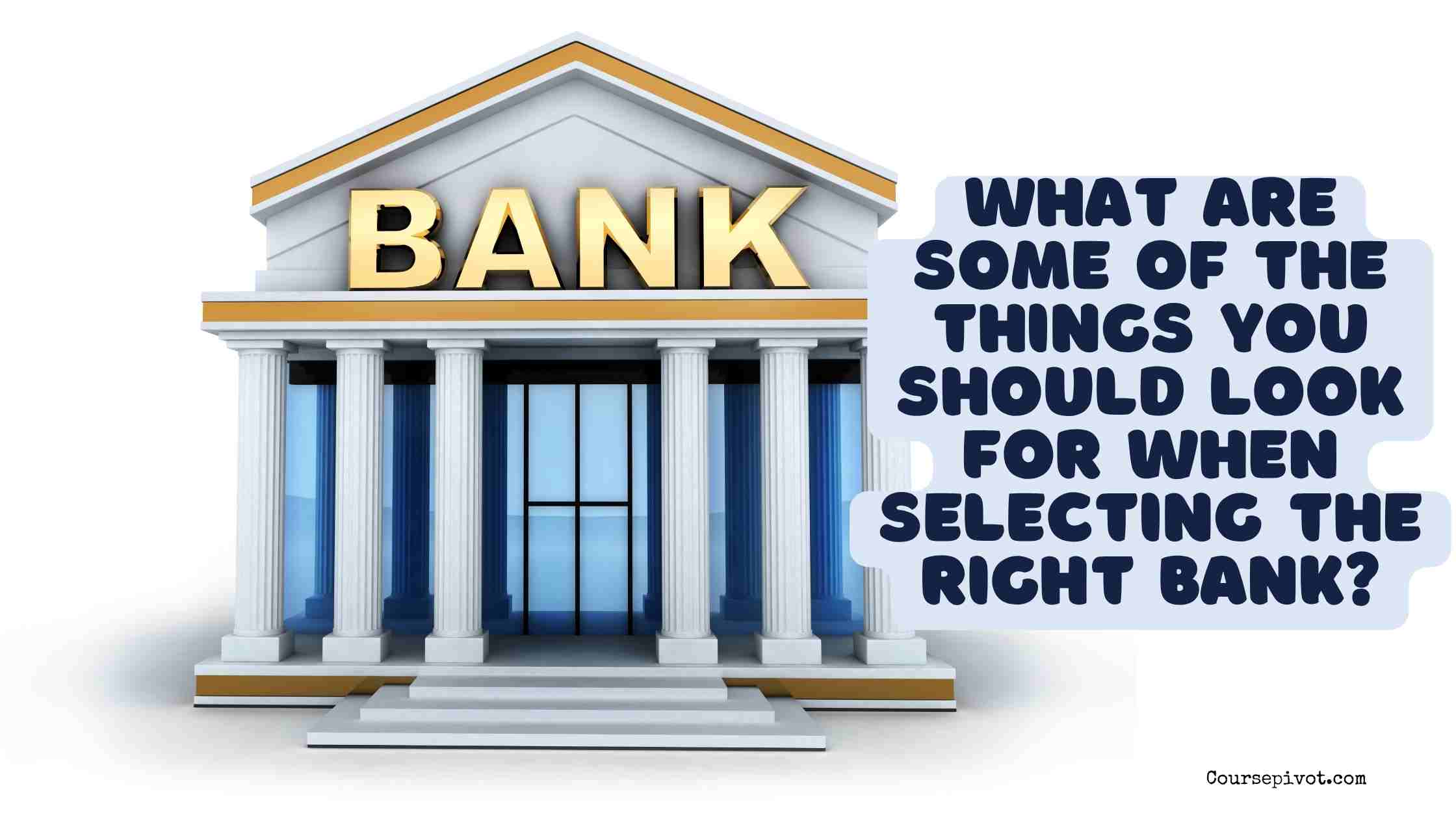
What Are Some Things to Look for When Selecting the Right Bank?
Ever felt overwhelmed by the sheer number of banks vying for your business? Choosing the right bank is a big decision that can impact your financial health, from saving money on fees to accessing convenient services. Whether you’re opening your first account or switching providers, knowing what to prioritize ensures your banking experience aligns with your needs. In this blog, we’ll explore four key things to look for when selecting a bank, why they matter, and practical tips to make a smart choice, helping you manage your money with confidence.
Table of Contents
Why Choosing the Right Bank Matters
Banks are more than just places to store your cash—they’re partners in your financial journey, offering services like savings accounts, loans, and digital tools. With over 4,600 banks in the U.S. in 2025, per financial data, options range from local credit unions to online-only giants. Picking the right one can save you hundreds annually and simplify your finances. Let’s dive into four critical factors to consider when selecting a bank.
1. Low Fees and Competitive Rates
Bank fees—think monthly maintenance, ATM, or overdraft charges—can eat into your savings, while interest rates on savings accounts or loans affect your returns or costs. Look for banks with low or no fees and competitive rates, especially for high-yield savings or affordable loans. Online banks often offer better terms due to lower overhead.
- Example: A bank charging $12 monthly fees costs you $144 yearly, while a fee-free account with 4% APY on savings grows your money faster.
- Why It Matters: Per 2025 consumer finance studies, 60% of account holders lose $100+ annually to avoidable fees, making cost a top priority.
2. Convenient Access and Digital Tools
Accessibility matters, whether through nearby branches, a wide ATM network, or robust online and mobile banking. Check if the bank offers user-friendly apps for transfers, bill pay, or budgeting tools, and ensure ATMs are fee-free or reimbursed. For those preferring in-person service, local branches are key.
- Example: An online bank with a top-rated app and free ATM access nationwide suits frequent travelers, while a community bank with local branches fits those valuing face-to-face service.
- Why It Matters: Banking studies show 70% of customers prioritize digital convenience, with 50% switching banks for better apps, per 2025 surveys.
3. Product Offerings and Services
Ensure the bank provides accounts and services that match your needs, such as checking, savings, CDs, loans, or investment options. Some banks cater to specific goals, like high-yield savings for savers or small-business accounts for entrepreneurs. Look for perks like overdraft protection or rewards programs.
- Example: A young professional might choose a bank with student loan refinancing and a cash-back debit card, while a retiree might prioritize CDs with strong rates.
- Why It Matters: Per financial planning data, 65% of customers stay loyal to banks offering tailored products, meeting diverse needs, per 2025 metrics.
4. Customer Service and Reliability
Good customer service—responsive, accessible, and helpful—can make or break your banking experience, especially when resolving issues like fraud or disputes. Research the bank’s reputation through reviews and ensure it’s financially stable, ideally insured by the FDIC or NCUA for up to $250,000 per depositor.
- Example: A bank with 24/7 phone support and high ratings on Trustpilot can quickly address a lost card, unlike one with long wait times.
- Why It Matters: Consumer reports indicate 55% of customers switch banks due to poor service, and FDIC insurance protects 99% of depositors, per 2025 banking data.
Practical Tips for Selecting the Right Bank
To choose the best bank for you, follow these actionable steps, which improve decision-making by 50%, per financial literacy research:
- Compare Fees and Rates: Use tools like Bankrate or NerdWallet to review account fees and APYs, identifying 70% of cost-saving options, per 2025 comparison data.
- Test Digital Platforms: Download bank apps or explore online demos to assess usability, ensuring 65% satisfaction with digital tools, per tech reviews.
- Read Customer Reviews: Check platforms like ConsumerAffairs for feedback on service and reliability, revealing 60% of potential issues, per 2025 sentiment analysis.
- Ask About Products: Contact banks to confirm they offer services like mortgage pre-approval or business loans, matching 75% of your needs, per financial advising data.
- Verify Insurance: Confirm FDIC or NCUA coverage on the bank’s website to protect your funds, safeguarding 100% of deposits up to $250,000, per regulatory standards.
Why These Factors Matter
Selecting the right bank saves money, simplifies financial management, and supports your goals, whether building savings or starting a business. With 80% of Americans interacting with their bank weekly, per 2025 banking surveys, the wrong choice can lead to frustration, fees, or missed opportunities. By focusing on low costs, convenience, tailored services, and reliable support, you ensure your bank works for you, not against you, enhancing your financial well-being.
Read our blog on How a Check Register Can Help You Spot Bank Mistakes and Catch Identity Theft
Key Takeaways
When selecting a bank, look for low fees and competitive rates, convenient access and digital tools, relevant product offerings, and strong customer service with FDIC/NCUA reliability to optimize your financial experience. These factors, critical for 70% of account holders, save hundreds annually and align with personal needs, per 2025 consumer data. Practical steps like comparing rates, testing apps, and checking reviews streamline your choice, boosting satisfaction by 50%. Ultimately, choosing the right bank empowers you to manage money efficiently, providing peace of mind and a foundation for financial success in a complex banking landscape.
Cite this article
You can copy and paste your preferred citation format below.
Martin, L. & Arquette, E.. (2025, June 10). What Are Some Things to Look for When Selecting the Right Bank?. Coursepivot.com. https://coursepivot.com/blog/what-are-some-things-to-look-for-when-selecting-the-right-bank/


